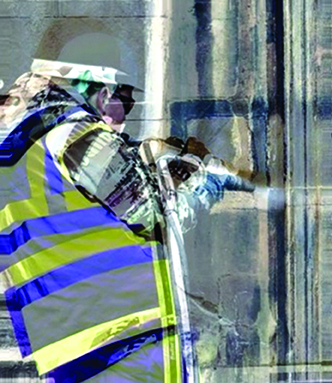Stone Heritage: by Stone Federation Great Britain
A natural retrofit
As specifiers become increasingly aware that a ‘business as usual’ approach to the carbon impacts of architecture and construction is not an option, there is a fresh drive to consider the alternatives.
In September last year Architects’ Journal launched the RetroFirst campaign aimed at prioritising the retrofitting of existing buildings over demolition and rebuild.
The campaign sits alongside several other initiatives all seeking to encourage architects to try and work with existing structure as a more sustainable approach to architecture and construction.
Retrofitting, or adding something new to something existing is not a new approach in construction. Through good maintenance and conservation schemes, hundreds, if not thousands, of natural stone structures have stood for centuries. Many of Great Britain’s major cities have been architecturally defined by natural stone buildings that have stood the test of time, while buildings made from other materials have aged poorly and been demolished.
Natural stone is one of the most sustainable of all construction materials, giving maintenance teams the option to redress, clean and replace damaged elements without the need to flatten the building and start again.
The ‘Repair & Restoration’ category of the Natural Stone Awards is full of impressive examples of buildings that have been retrofitted; structures that, had they been concrete or other less resilient materials, would have been demolished.
One of the key factors is the decision to choose natural stone in the first place. Unfortunately, the last few decades have seen the construction sector steer further and further away from durable building solutions and err more on the side of quick, cheap but relatively temporary materials. It is encouraging to see a shift away from this specification model as the architectural industry is challenging itself to change its habits and techniques to deliver a more sustainable solution.
The Architects’ Journal campaign references a study by the Department for the Environment, Food & Rural Affairs (DEFRA) that found of 200million tonnes of waste generated in Britain annually, 63% is produced by the construction industry.
It is for this reason, among others, that proper maintenance is essential. If it is carried out periodically with suitable skill and understanding, the greater will be the environmental and practical advantages in the preservation of the structure.
But cleaning and maintenance does need to be carried out by fully trained operatives in order to avoid any damage being caused by the use of an inappropriate method or incompetent operation.
Cleaning is necessary because decay often starts around an open joint or cracked masonry that cannot be seen if the fault is obscured by dirt.
To search for a natural stone conservation or restoration expert who can advise you on appropriate cleaning and maintenance for any particular building, see The Stone Heritage Register at bit.ly/Heritage-reg.

